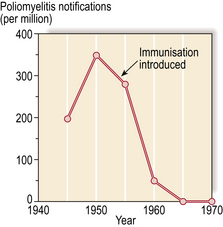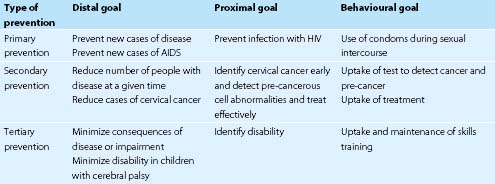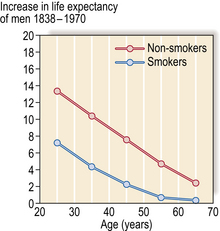Chapter 32 What is prevention?
The goals of prevention are to preserve and promote good health in society by preventing disease and minimizing its consequences. It is useful to distinguish between three types of prevention, usually referred to as primary, secondary and tertiary prevention. The distinction between these three types of prevention is that each has a different goal. Have a look at Table 1 before you read on.
Primary prevention: disease incidence
Perhaps the best-known form of medical intervention in primary prevention is mass immunization. Over the years, immunization has been introduced against poliomyelitis, tuberculosis, measles and many other diseases. However, since it usually takes several years of medical research before a virus is identified and a vaccine developed, the impact of immunization on disease incidence is sometimes very small. Poliomyelitis immunization is probably one of the few medical interventions to have had a demonstrable primary prevention effect in the last century (Fig. 1).

Fig. 1 Poliomyelitis notifications before and after introduction of immunization: England and Wales
adapted from McKeown, 1979, with permission.
The major causes of death in developed countries today are diseases of the circulatory system and neoplasms (see pp. 42–43). These diseases have been linked to particular behaviours, such as smoking cigarettes. Figure 2 shows that smokers’ life expectancy during the last century has increased only half as much as that of non-smokers, a remarkable finding given the improvements in nutrition and sanitation that have occurred during the same period. In developed countries primary prevention efforts have been particularly concerned with health education regarding personal behaviours (see pp. 74–75).





